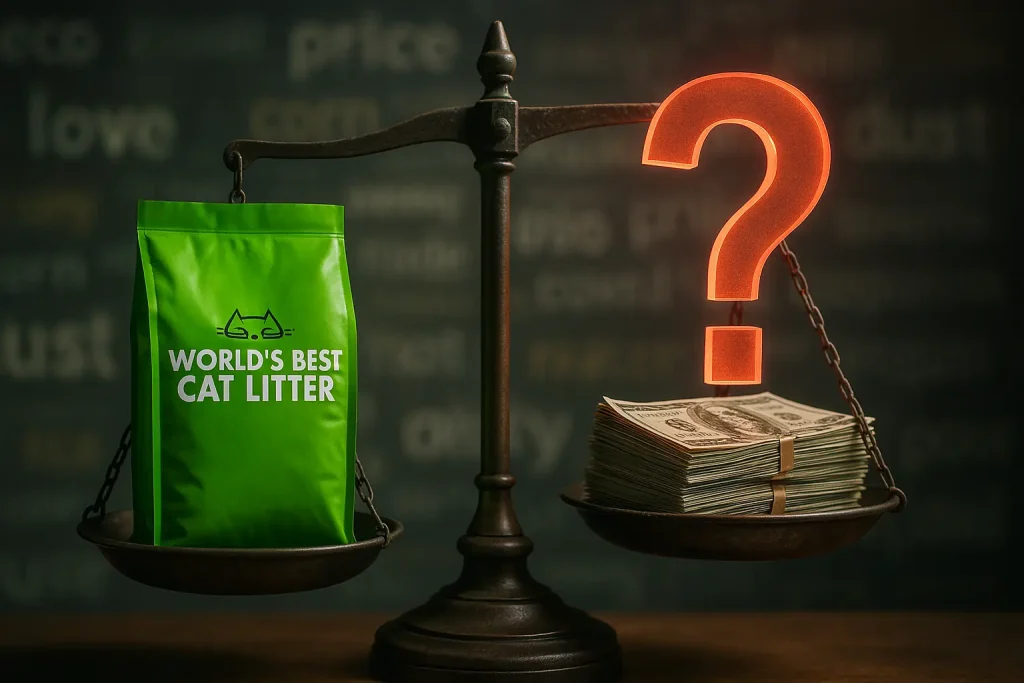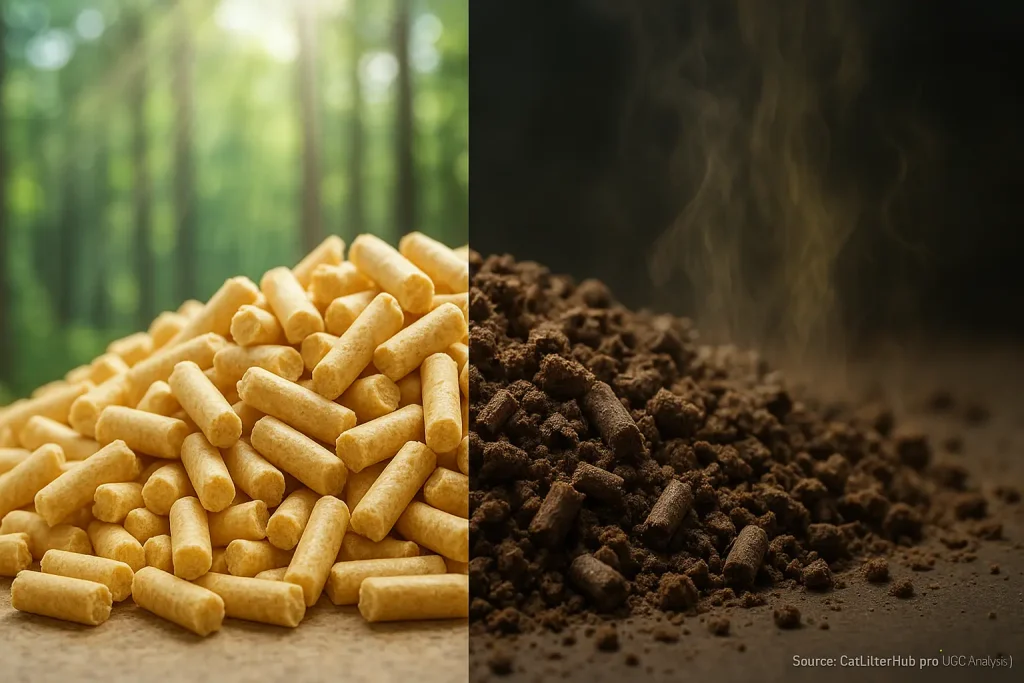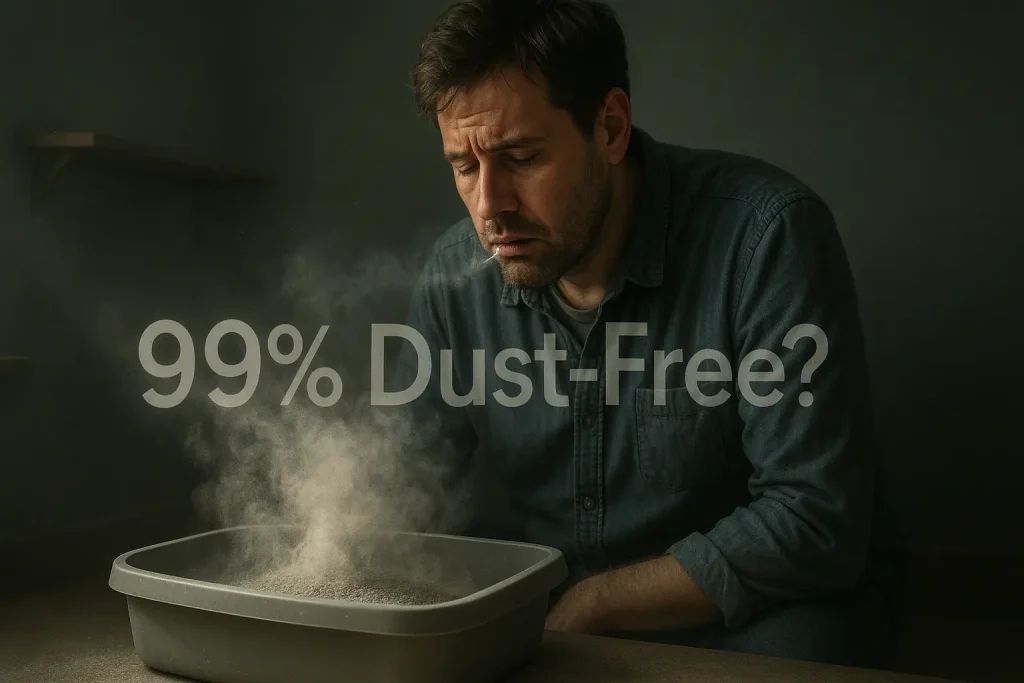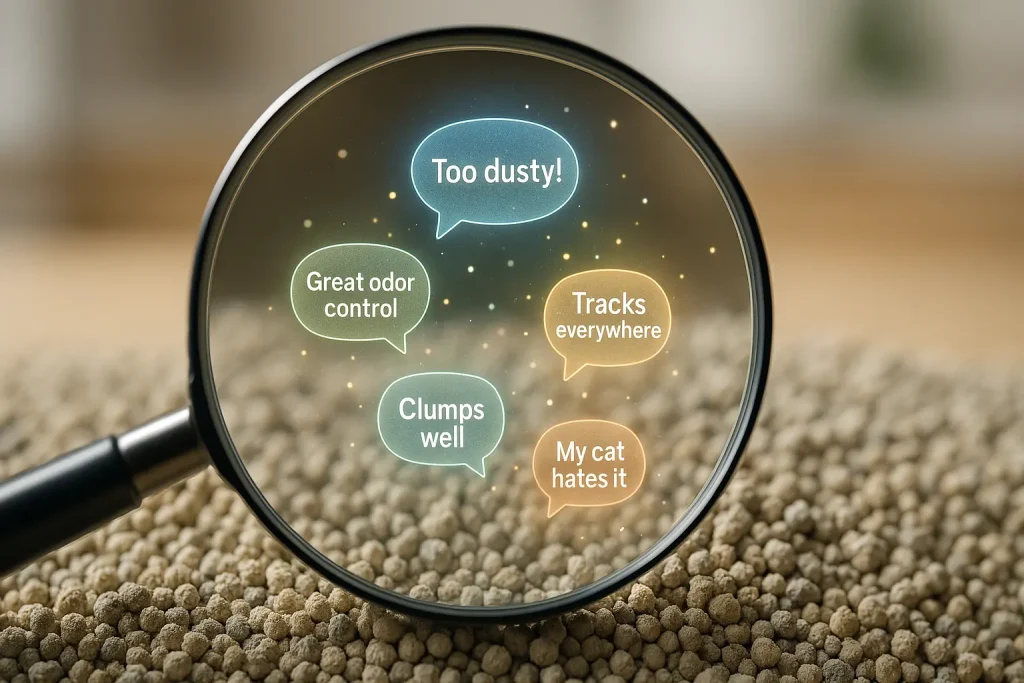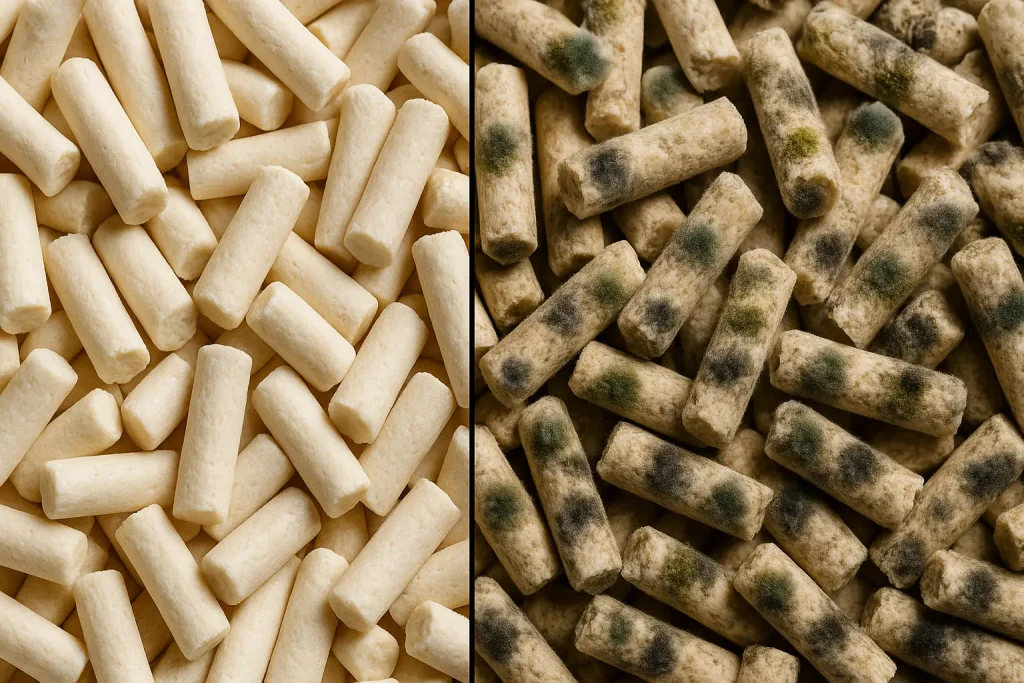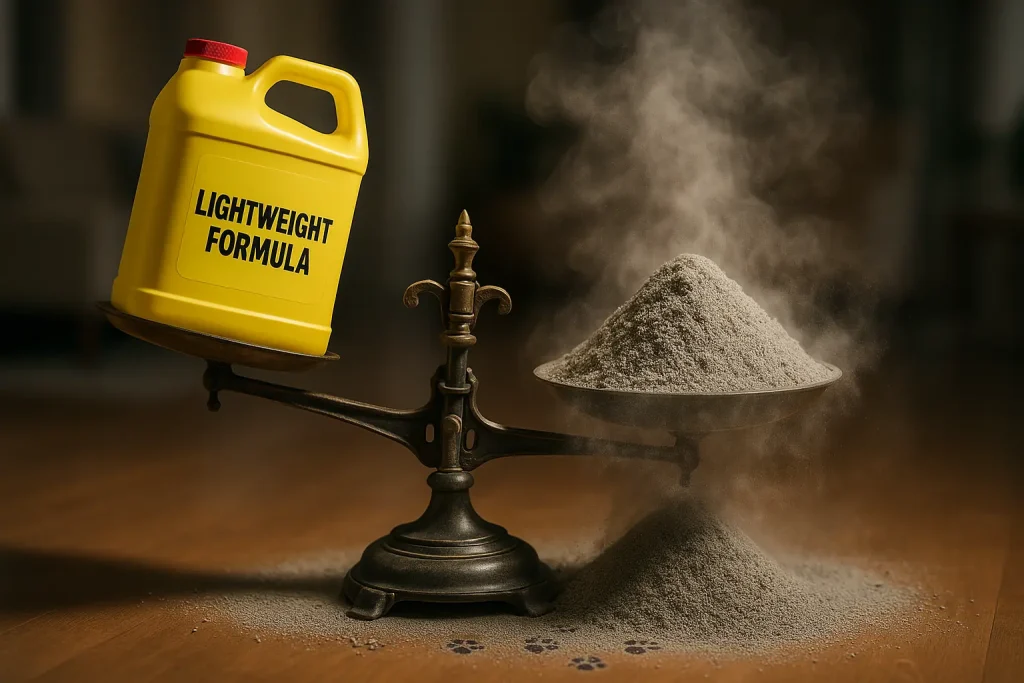What is "Litter-Crete"? The Sticky Truth About Cemented Clay
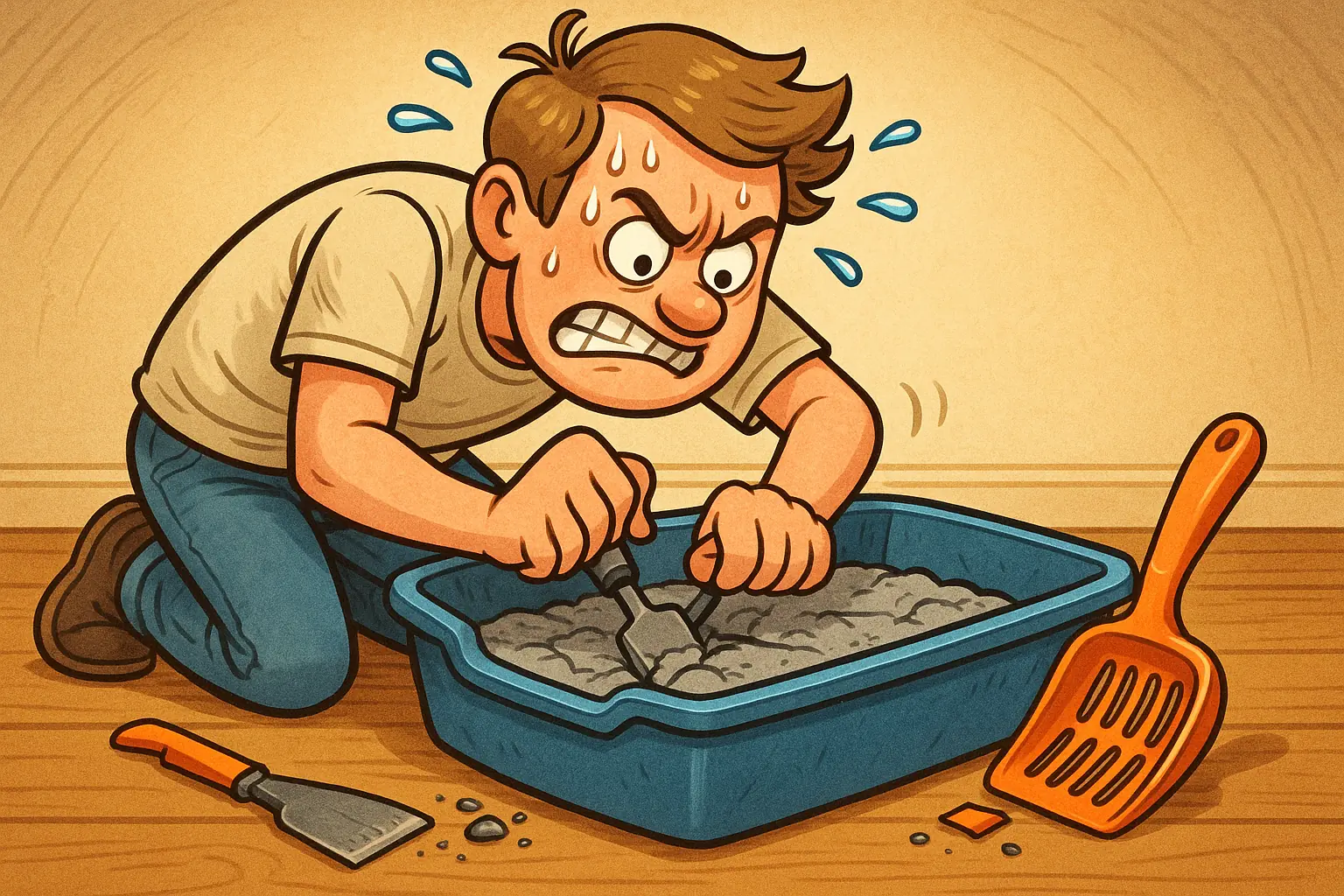
Ever felt like you need a chisel, not a scoop, for your cat's litter box? You're not alone. Thousands of clay litter users describe a rock-hard, cement-like substance forming at the bottom – a phenomenon many grimly call 'litter-crete'. This user-coined term aptly captures the frustrating reality. It's direct user experience speaking.
'Litter-crete' describes clumping clay fused into a solid mass. Users report this material becomes incredibly difficult to scoop. Some even resort to putty knives or garden trowels for removal. This daily battle adds considerable time to litter box cleaning. User frustration is palpable in many reviews.
This isn't some rare glitch. Our analysis of extensive user feedback shows 'litter-crete' is a common complaint. It appears across numerous clumping clay litter brands. Many owners, seeking solutions, share nearly identical stories of this sticky problem. The term itself highlights a widely shared, deeply annoying experience for cat parents.
Why Your Clay Litter Turns to Concrete: Unpacking the Culprits
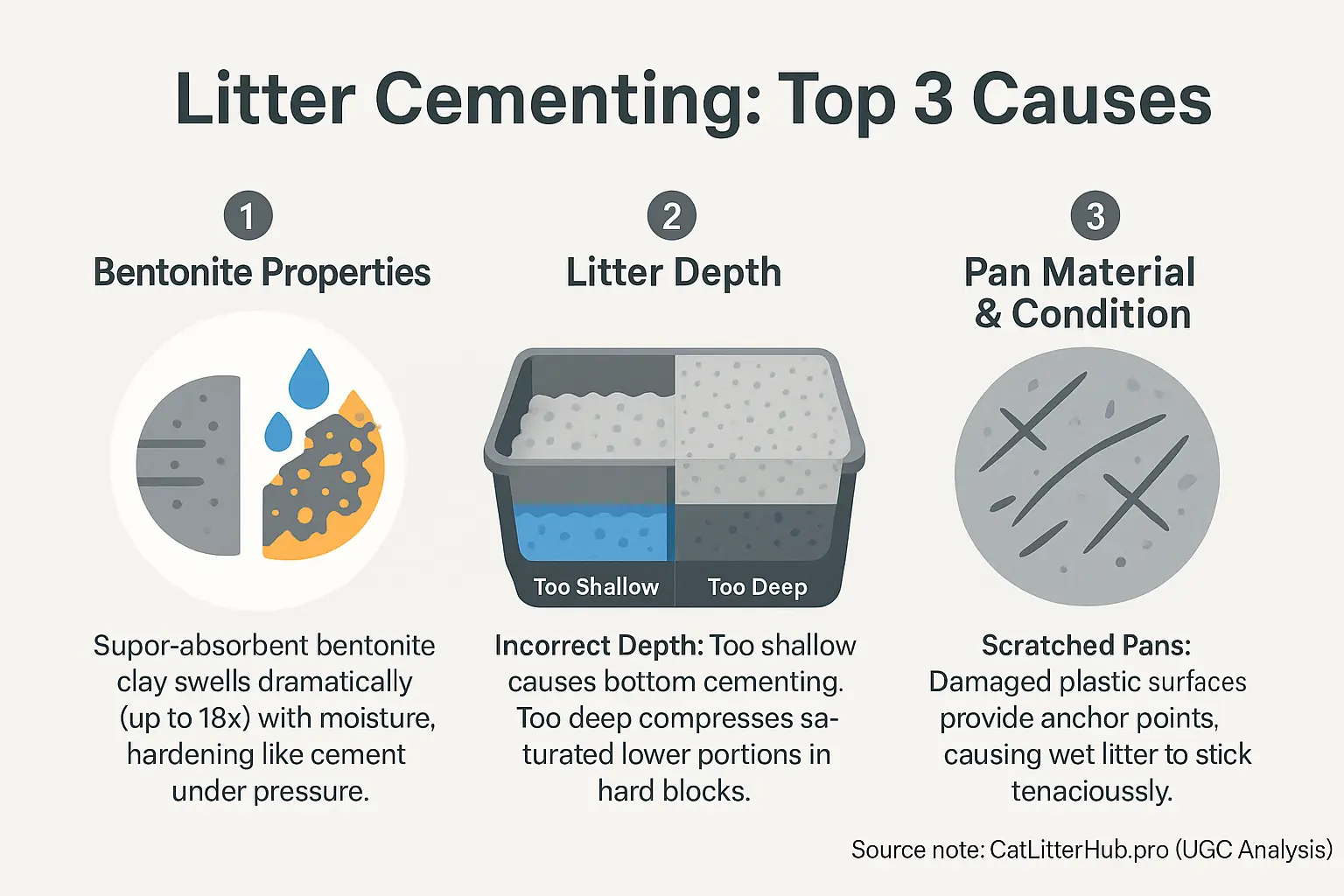
Bentonite, the magic in clumping clay, emerges as a primary suspect. Its super-absorbent nature causes this. Over-saturation or compression turns bentonite concrete-like. Countless users have discovered this frustrating transformation when litter bonds firmly to the box.
Insufficient litter depth presents a major issue. Urine pools. It hits the pan bottom directly. This creates stubborn, cement-like patches owners widely describe, especially in corners or where cats repeatedly urinate.
Excessive litter depth also contributes to cementing problems. The top litter's weight can compress lower, wet layers. Users observe this compression turning saturated litter into dense, hard slabs that defy easy scooping.
Litter box material matters. A lot. Scratched plastic pans, users observe, trap wet clay almost like Velcro. These compromised surfaces create tougher bonds, making complete removal a real battle, as many cat owner experiences confirm.
The Daily Grind: Scooping Nightmares & Broken Tools (Real User Laments)
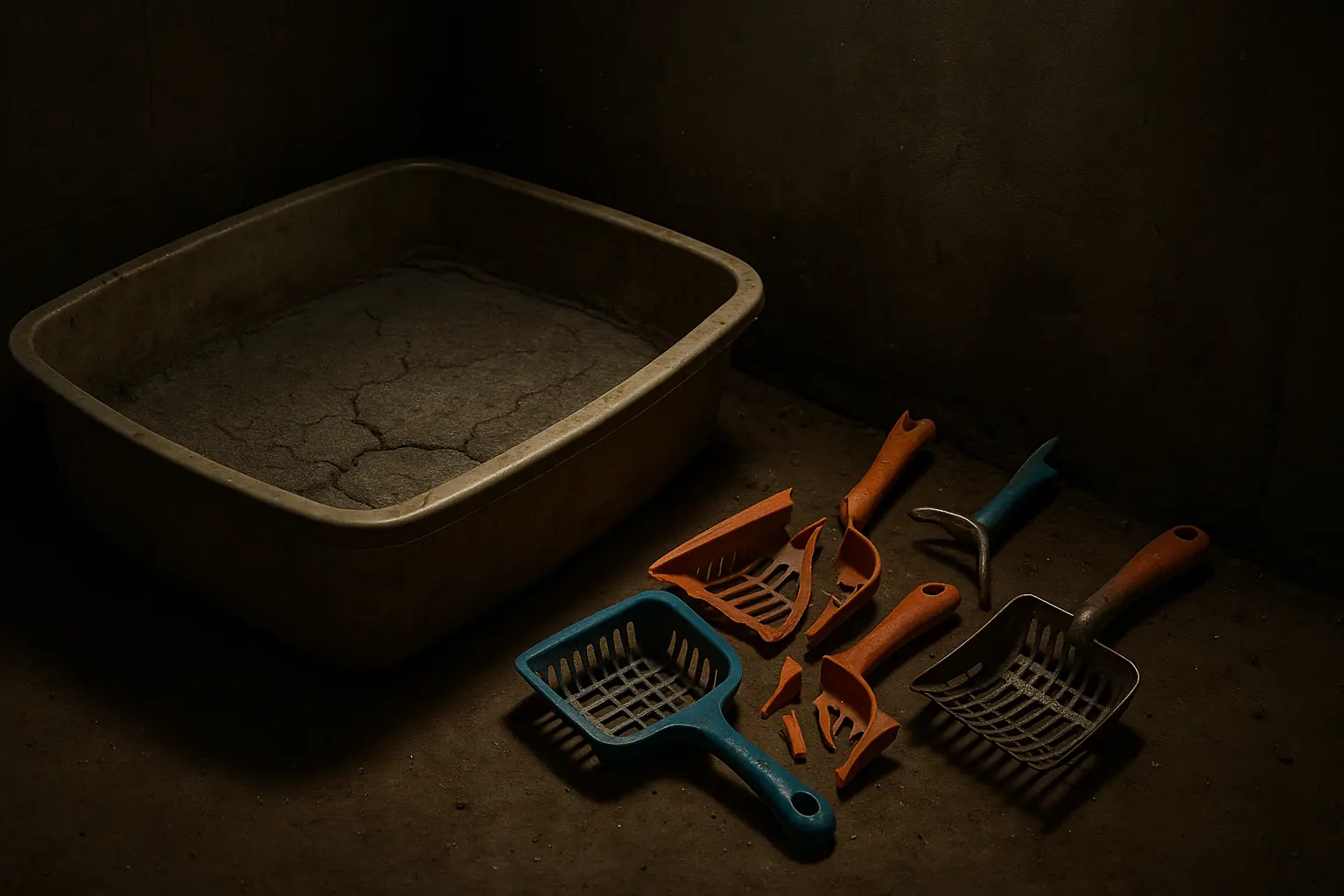
"I swear I need a jackhammer!" one owner exclaims, a frustration Cat Litter Hub sees echoed in countless user reviews. The daily scooping often transforms from a quick chore into an arm-wrenching workout. Many cat parents find certain litters, especially some clays, solidify like actual concrete at the bottom of the box. This intense physical struggle is a primary complaint emerging from our analysis of widespread user feedback.
Plastic scoops? Users consistently report they snap like dry twigs against this cemented waste. Even some sturdier metal scoops bend or outright break under the relentless strain of chipping away at hardened clumps. This recurring damage creates a veritable 'scoop graveyard' in many homes, a testament to the battle. The continuous expense of replacing broken tools only deepens the daily annoyance for these cat owners.
The problem extends beyond just physical effort or added cost. It becomes an emotional burden. Owners frequently describe the sheer dread of facing that litter box, knowing the difficult scooping session ahead. What should be a simple, swift task morphs into a genuinely despised, time-consuming ordeal for many. This persistent frustration with cemented litter, highlighted throughout user experiences, often becomes a powerful motivator for individuals to seek entirely new litter solutions, hoping for relief.
Beyond the Scoop: How Cementing Secretly Sabotages Your Cleaning & Wallet
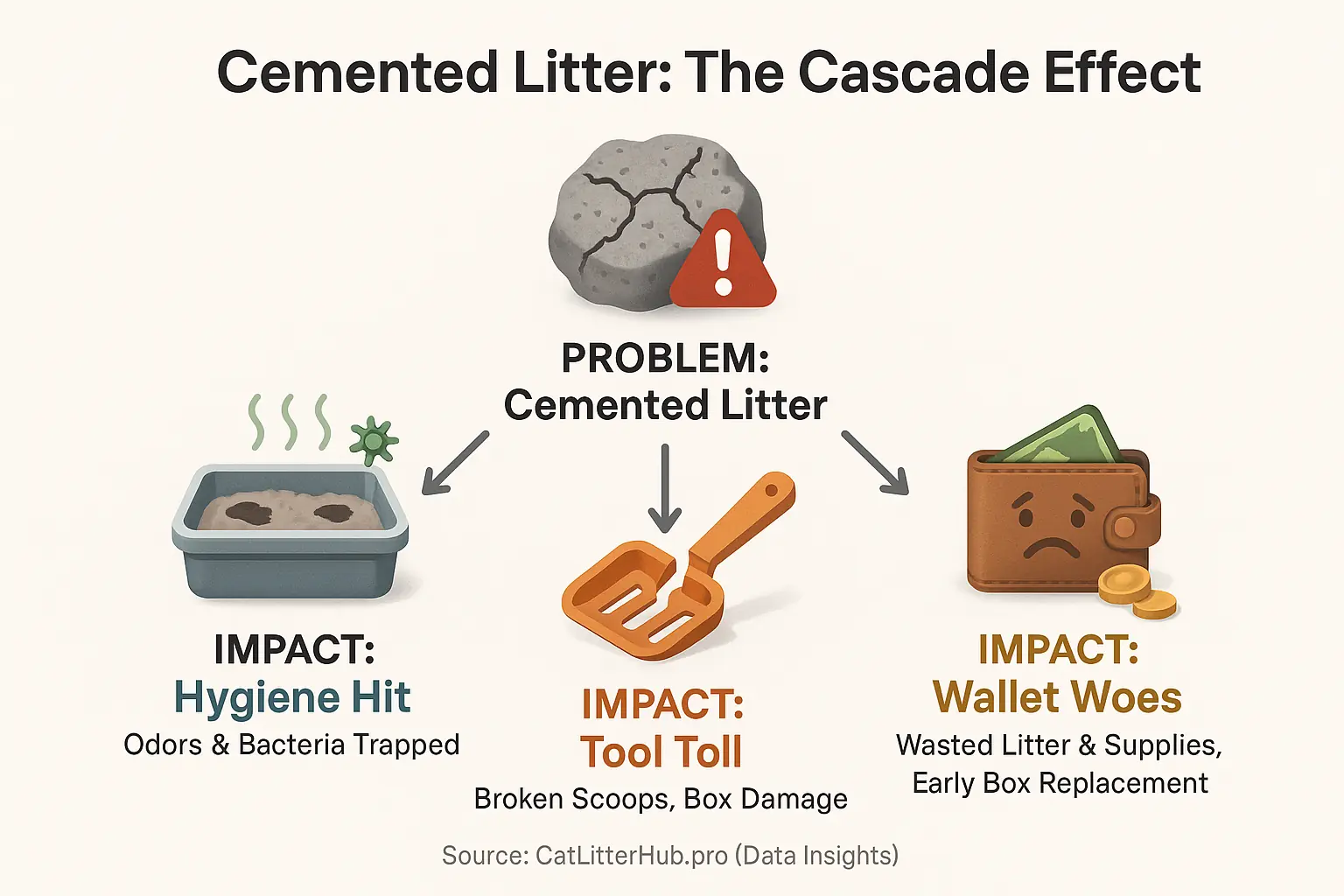
Litter cementing secretly sabotages far more than just your scooping arm. That rock-hard layer? It often necessitates more frequent, laborious full litter box changes. Countless owner accounts confirm this grueling reality. Your litter box might never feel truly clean, despite diligent scooping of loose waste.
Those cemented patches become stubborn odor hotspots. Lingering smells often hide there, our analysis of user complaints reveals, no matter how well you scoop the top layer. This hidden grime, a persistent finding in user feedback, compromises overall litter box hygiene significantly. Bacteria can thrive in these unscoopable, caked-on areas, creating an unhealthier environment for your cat.
The financial burden of cementing creeps up unexpectedly. Hardened litter, especially clay types, can physically damage plastic litter boxes over time, users report. This damage often leads to premature replacements, a cost many owners overlook initially. What's the real tally? More wasted litter from necessary full dumps, increased spending on heavy-duty cleaning products, and the frustration of replacing snapped scoops. It’s a hidden tax on certain litters, as seasoned cat parents frequently point out in their reviews.

